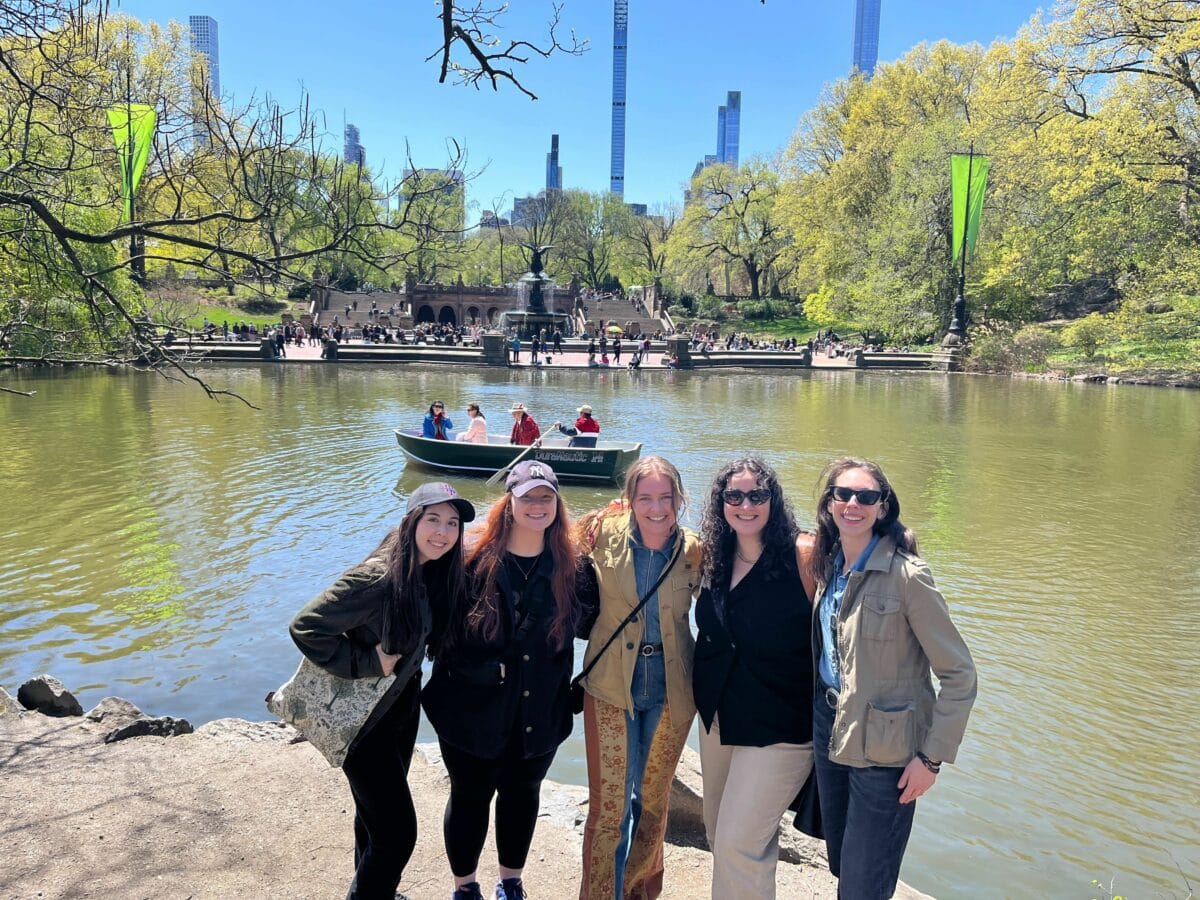
In honor of Earth Day, Pace’s Community & Culture Committee organized a local climate solutions outing this week in partnership with the Central Park Conservancy. As a NYC-based PR firm with a designated team that focuses on climate solutions, we jumped at the opportunity to familiarize ourselves with the climate solutions that exist right under our noses in Central Park, the “lungs of New York.” In conversation with our Climate team, we considered: What are the climate solutions that we live in, walk past, and breathe every day?
To learn more about our hometown climate solutions, our team joined the Central Park Conservancy’s inaugural Sustainability Walking Tour. With 42 million visitors every year (surpassing the country’s top 5 most visited National Parks combined!), the park’s lush greenery and charming water bodies do more than provide a reprieve from the concrete jungle: Central Park also helps to protect New York City from flooding and overheating, and serves as an important climate solution incubator.
Our team walked away enthused by the Park’s initiatives! Below, several of our colleagues share what stood out most to them:
Emma Kemp: Reducing Algae Blooms with Biochar Filters
“I’ve always loved Central Park’s many waterways – rowboats skimming across the pond, turtles sunbathing on logs, birds darting through reeds. The ponds and streams provide an important ecosystem for wildlife, naturally capture emissions, and provide natural cooling for those who sit on their banks.
But hotter waters due to human-caused climate change and runoff from flood events has led to an increase in mass algae blooms – which block sunlight from reaching fish and underwater plants, can remove oxygen from water, and even cause a health reaction for humans (and dogs!) that come near them. Mass algae blooms have wreaked havoc around the planet, impacting ecosystems, public health, and even economies. Last summer, several of my clients raised concerns about the record-huge algae bloom from the Caribbean to Western Africa.
The Central Park Climate Lab has piloted a biochar filtration system in Turtle Pond to prevent a build up of minerals that can lead to these mass algae blooms. A year in, the experiment has been successful with plans to expand to other waterways in the park!”
Kristin Lunt: Respite from Urban Heat Islands
Central Park is such an important respite from the constant commotion and stimulation just outside of it. Hundreds of acres of gardens, woodlands, paths and forestry were built to benefit our physical and mental health – especially in Summer in NYC, where we experience the “urban heat island” effect: metro areas can be ~10 degrees hotter than nearby areas in summer because of heat absorbed and retained by pavement and buildings. Central Park reduces these effects with its 18,000 naturally cooling, heat-absorbing trees! Preserving and maintaining vegetated park land and healthy woodlands and natural areas in our urban parks is important as we collectively face warming temperatures.
The park has played an important role in tracking climate change influenced weather patterns – with the second oldest recording weather station in America (est. 1867) right behind Belvedere castle. For example – before January of 2024, NYC saw an astonishing 324 days without significant snowfall, negatively impacting important ecosystems for animals + plants. Central Park also reports its weather pattern tracking directly to the NOAA, making it an invaluable resource.
Isabella Silber: A Natural Oasis in the Concrete Jungle
It’s easy to feel disconnected to nature in a city coined the “Concrete Jungle”, especially if consumed in the hustle and bustle of New York City. But right there in the middle of Manhattan, lies an 800+ acre park that gets more visitors each year than top National Parks across the U.S.
Urban biodiversity is essential to the health and wellbeing in densely populated areas. As climate change continues to become more and more prevalent in our lives, the greater the amount of variation in species will allow for the park to continue to thrive in changing conditions. The combination of dedicated volunteers, workers, and a $100+ million operating budget is critical to the success of the park. All work in unison daily to care for the park in ways such as removing invasive species, using electric power, removing non essential trash cans, actively restoring areas of the park, caring for the wildlife, to name a few.
In a city filled with skyscrapers, man made attractions, and cement, Central Park offers an unlikely escape and connection to the environment – which I think is what makes it so incredible to locals and visitors alike. I am grateful that we got to be a part of the first EVER Sustainability Walking Tour and learn more about what makes Central Park so unique.
